As large gas users in Australia’s eastern and south-eastern states have struggled in recent months to manage their significant gas supply and cost risks, the announcement by the Minister for Resources in late April was a positive indication that efforts are underway to make more gas available. So what is the DGSM? What do we know about how it would work? Energetics’ Energy Markets team provide their response to the announcement and the features of the new mechanism.
With industry experiencing considerable challenges in contracting supply and concerns growing over the knock on effect of high gas prices on electricity prices, the Federal Government decided to impose restrictions upon the export of gas. The statement from the Office of the Prime Minister issued 27 April, read, “If an exporter is not a net contributor to the domestic market, that is, they draw more from the market than they put in, they will be required to outline how they will fill the shortfall of domestic gas as part of their overall production and exports. The Government will not prescribe how the exporter must respond, giving companies considerable flexibility in finding commercial solutions – such as swapping cargoes out of portfolios or on the spot market. LNG exporters who are drawing from the domestic market will be ordered to limit exports to ensure local supply.1”
However, we need to see more details on how the following issues will be managed:
- As it stands, the policy announced is all about net volume - there is nothing about price - just the assumption that redirected volume will result in lower prices
- We also do not know the threshold (price or available supply) at which the ACCC will intervene.
We also note from our long experience working with ASX200 businesses, that the issue that Australian business most struggles with is the lack of policy certainty. Direct government intervention into the market has to be based on a clearly understood trade-off between the expected benefit and the effect of creating distortions which could undermine confidence in large scale energy investments in Australia. Such effects can be felt from upstream development through to downstream markets, with flow on effects for large users who may delay expansionary activities or new energy intensive capital projects.
What does it mean for the producers?
Santos is currently drawing gas from their production buffer (more gas is always produced than needed for fulfilling export contracts) to ensure that they meet LNG floor take-or-pay cargoes2. However, other than Santos (GLNG), the LNG producers use their own upstream reserves. With what we’ve seen so far of the DGSM, these producers can demonstrate that they are not drawing from reserves that could be used for domestic supply. Diverting gas from upstream wells and sending it to Wallumbilla for domestic use (instead of Gladstone) isn't that easy! We saw Origin / APLNG issue a statement3 that they will comply and work with the regulator because they know they are on solid ground in terms of demonstrable net volume.
So for producers other than Santos, the DGSM would appear to have little impact.
The Australian Financial Review4 reported statements made by Santos’ CEO, Kevin Gallagher, who said that attention should be directed to state governments such as Victoria which are, in his words, “…hampering access to onshore gas resources”. He went on to say, “we will continue to work constructively with the government to ensure any new export licensing regime is workable, that there are no adverse consequences for domestic users, particularly manufacturers that require supply at affordable prices."
Looking to future supply solutions, last week Woodside confirmed it had gas available for east coast processors, but said it would be charging commercial prices for supply. They also indicated that they would participate in gas or cargo swaps in which Woodside would meet the export contracts of east coast producers, so that they could be freed up to supply the domestic market. The CEO said, "We've got cargoes available to sell in spot prices. If you wish to purchase them, then come and see Woodside." Questions are then raised as to the merits of a pipeline versus regasification, however as a pipeline could realistically only begin to deliver gas in 5-10 years, shipping LNG and degasifying could be taking place in a year or so5.
Also last week Esso and Mitsui announced a new $5.5 billion gas plant at Longford, Victoria to lift production for the domestic market. In a media statement, Exxon Mobil chairman stated "It allows us to develop some of these more complex fields that have different chemical complexity"6. In late March, Shell announced to the market its intention to drill 161 new gas wells in Queensland by the end of 2018. As the media report stated, “...helping to underpin its promise to continue supplying 10% of the domestic gas market to help prevent a shortage".7
What is the outlook for pricing and negotiating two/three year contracts now?
We do not expect prices to suddenly reduce in the short to medium term. We can see more gas producers willing to enter the market and expand their exploration and production activities, but the moratoria on gas exploration are clearly hindering what should be a typical market response to high price signals.
Competition needs to return to the market with more retailers engaging than we are seeing currently. This has not been addressed. We’ve seen the number of participating retailers contract from 4-5 some 12-18 months ago, to 1-2 retailers prepared to offer supply contracts now. The market is considered too risky at the moment by most retailers because of the level of uncertainty in supply and transportation costs.
Energetics’ Energy Markets team are seeing gas prices offered on contracts in Qld in the order of $13-$15/GJ and in NSW around $18-$19/GJ. At this stage it looks like a possible intervention on gas exports may limit supply risks on gas power generation (clearly identified by the Australian Energy Market Operator in their March 2017 Gas Statement Of Opportunities8) but not necessarily limit prices on domestic gas supply contracts. Also, wherever there is uncertainty, the risks will be reflected in futures pricing which may impact those who are approaching contract renewal for the next financial year.
There is no doubt that access to affordable, predictable gas supply is a critical national issue, not only for the competitiveness of individual businesses impacted by the costs of retail gas and electricity contracts, but for the overall health of our economy. We also see implications for Australia’s ability to transition to a low carbon energy mix, as competitive gas pricing for synchronised and dispatchable gas-fired power generation is vital to the uptake of intermittent renewable energy generation. It is therefore essential that the gas supply shortfall is addressed quickly.
As the DGSM’s start date of 1 July 2017 approaches we await further critical details. We will provide updates once more information is made available.
References
[1] Statement from the Office of the Prime Minister | Delivering affordable gas for all Australians
[2] Cole, W, Reuters, 27.4.2017
[3] Origin Energy Ltd | Australia Pacific LNG Reaffirms it is a net contributor to the domestic gas market
[4] AFR | Santos CEO warns on consequences of LNG export controls
[5] ABC News | Woodside confirms gas up for sale to east coast, but pipeline would take 5-10 years
[6] ABC News | Esso's new $5.5b Longford plant to 'boost production' for Australian energy market
[7] Paul, S, Reuters, 21.3.2017
[8] AEMO | Gas Statement Of Opportunities



